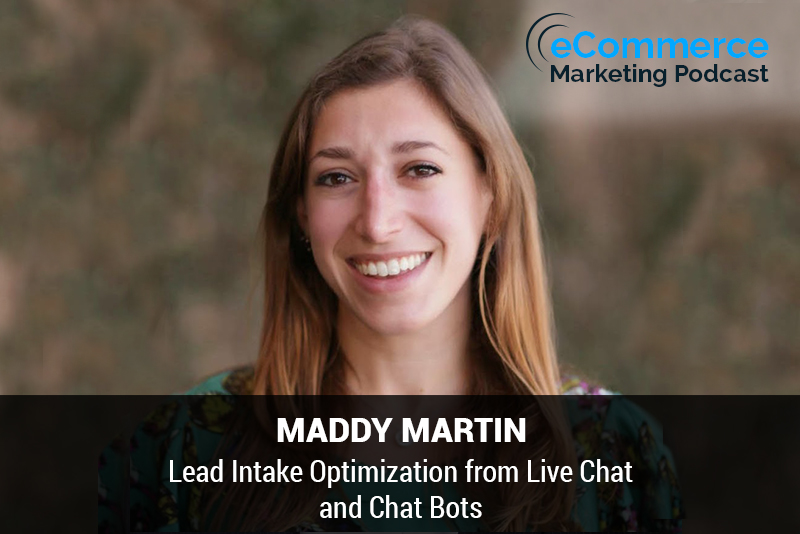
The eCommerce Marketing Podcast walks you through everything that goes into ecommerce marketing — from inbound marketing to paid advertising to conversions. Learn the strategies top marketing experts use to grow their businesses.
Marketing Strategies Revealed in this Episode:
- How to determine which live chat and chat bot tools to use
- Why live chat and chat bots are so popular these days
- What are some best practices for lead intake and lead conversion
- Tools and resources that you recommend for Lead intake and lead optimization
- Top brands that do a great job with lead conversion, live chat and chat bot conversions

Episode Title: Optimizing Lead Conversions with Live Chat and Chatbots
Guest: Maddy Martin, Head of Growth and Education at Smith.ai
In this episode of the eCommerce Marketing Podcast, Arlen Robinson interviews Maddy Martin, the Head of Growth and Education at Smith.ai. Maddy brings her extensive background in digital marketing, small business communications, lead conversion, and more. The discussion dives deep into leveraging live chat, chatbots, and lead conversion strategies to enhance sales and customer engagement for eCommerce businesses.
Key Takeaways:
- Maddy’s Background and Journey (00:02:00):
- From economics graduate to working in various tech startups, Maddy shares her diverse experiences in audience development and digital marketing.
- Determining the Best Lead Conversion Method (00:08:00):
- Factors such as product type, website robustness, and customer needs influence the choice between live chat, chatbots, or other methods.
- Chat as a Preferred Communication Tool (00:15:00):
- Customers often prefer chat over calls for its convenience, discretion, and quick access to information.
- Importance of Capturing Customer Information (00:20:00):
- Always capture name, email, and optionally phone number before starting a chat to ensure follow-up in case of disconnection.
- Multichannel Approach to Lead Conversion (00:28:00):
- Combining chat, email, SMS, and phone calls can enhance lead conversion by catering to customer preferences.
- Best Practices for Lead Intake and Conversion (00:35:00):
- Use CRM integration, chat-to-call features, and appropriate follow-up systems to ensure a seamless lead conversion process.
- Top Brands Excelling in Live Chat and Lead Conversion (00:45:00):
- Examples include MailChimp and Amazon, which use chat effectively to provide customer support and drive sales.
Guest Information:
- Name: Maddy Martin
- Position: Head of Growth and Education at Smith.ai
- Contact: [email protected]
- Website: Smith.ai
- Special Offer: Use the code ARLEN100 to get $100 off live services at Smith.ai, including a free trial for AI-only chatbots.











